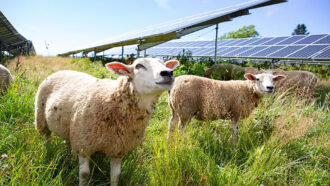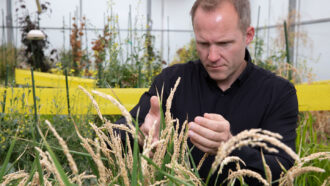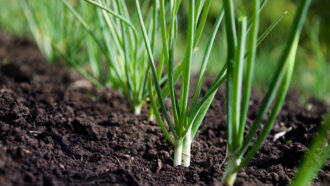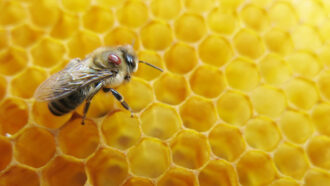Dew collector brings water to thirsty plants
The invention could help plants in arid areas or where there is little water for irrigation
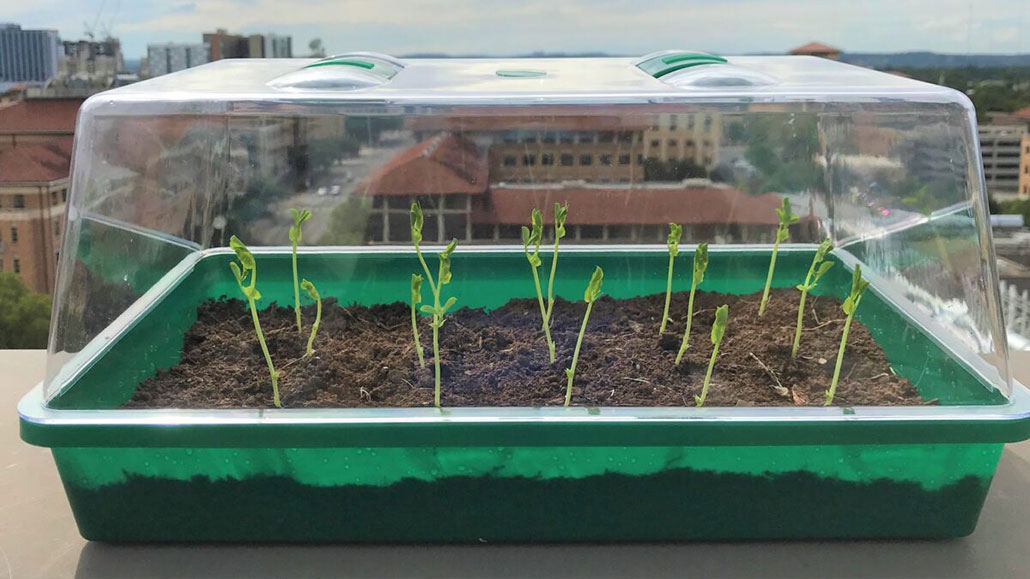
Radish seedlings grow in self-watering soil on the roof of a building in Texas.
Cockrell School of Engineering, The University of Texas at Austin
Besides healthy soil, all plants need water. This makes it hard to grow plants where it’s dry. But researchers in Texas may have found a way to keep plants from dying of thirst at arid sites. They developed a soil additive. When mixed into the ground, it will steal water from the air to share with plants.
Their invention is a super-moisture-absorbent gel, or SMAG. It absorbs water from the air during the night. When the sun warms it the next day, that gel releases its accumulated moisture into the root zone of the plants.
The gel-based material “can be used as a soil enhancer, as well as alternative soil in greenhouses for crop planting,” said Guihua Yu. He’s an engineer at the University of Texas-Austin. He led the team that developed the gel. Depending on the plants being grown, he says, this material could be “directly mixed with soil or fertilizer at certain amounts.”
The gel works similarly to how morning dew forms. Dew is those water droplets clinging to blades of grass after dawn. It forms because of differences in air temperature between day and night. Air contains lots of different gases, including water vapor. Warmer air can hold more water vapor. So as the air cools after dark, it loses its ability to hold some of that moisture. When it reaches a certain temperature — known as the dew point — any excess moisture will condense out onto surfaces, such as leaves. When temperatures warm the next day, that water evaporates, again turning into a vapor.
The research team decided to harness this process to aid plants. The gel they mix with soil absorbs the dewy moisture and holds it. The next day, rather than allowing it to evaporate, the gel instead slowly releases that water into the soil.
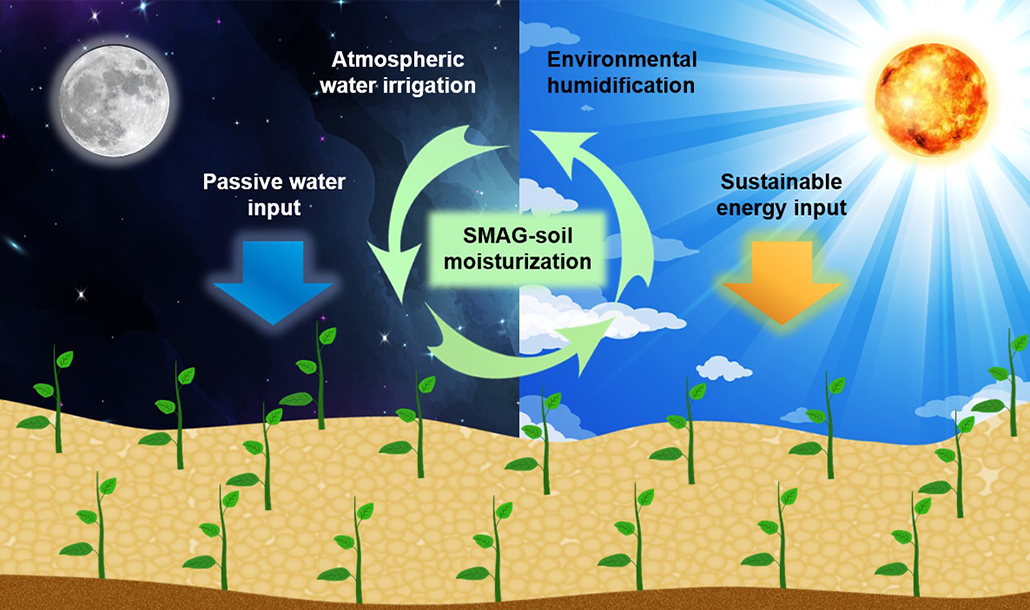
The engineers tested the soil additive to grow radishes on the roof of building at the school. During an experiment, they compared radishes grown in sandy soil alone with radishes grown in sandy soil that had been mixed with the gel. The gel-treated soil lost about 60 percent of the water that it had started with about a month earlier. In contrast, the untreated soil lost 80 percent of its water in just one week.
The researchers shared their findings October 1 in ACS Materials Letters.
Questions remain
Jeff Hattey is a soil scientist who works at Ohio State University in Columbus. He says similar additives have been used in potting soil for many years. “When you buy potting soil at the store,” he says, “you may see labels that say, ‘slow release fertilizer.’” The gel works in a similar way.
But you probably won’t see the gel at the hardware store anytime soon. “The big questions for me are, first, how much SMAG-soil would you have to use? How long does it last once it’s in the soil? And what happens to the quality of the water and the soil as the SMAG-soil breaks down?”
Hattey also notes that based on the quantities of the new material used in Yu’s experiments, outdoor fields might require a whole lot of it. How much? He did some rough calculations to figure it out. According to his math, farmers might have to add to the top six inches of soil “about 13 dump-truck loads [of gel] per acre.”
Yu believes future studies will help his team understand if the gel could be used for larger, outdoor fields. If it can, the moisture collected by the gel-treated soil could allow crops to be grown in dryer climates, where irrigation is not practical.
Fortunately, the gel is not toxic, Yu says. So it shouldn’t hurt the bacteria or worms that are needed to keep soil healthy for growing things. The gel also should pose no risks if it washes into lakes or streams. Some special bacteria may even help the gel safely break down, he adds. The research team hopes to confirm that in the near future.


